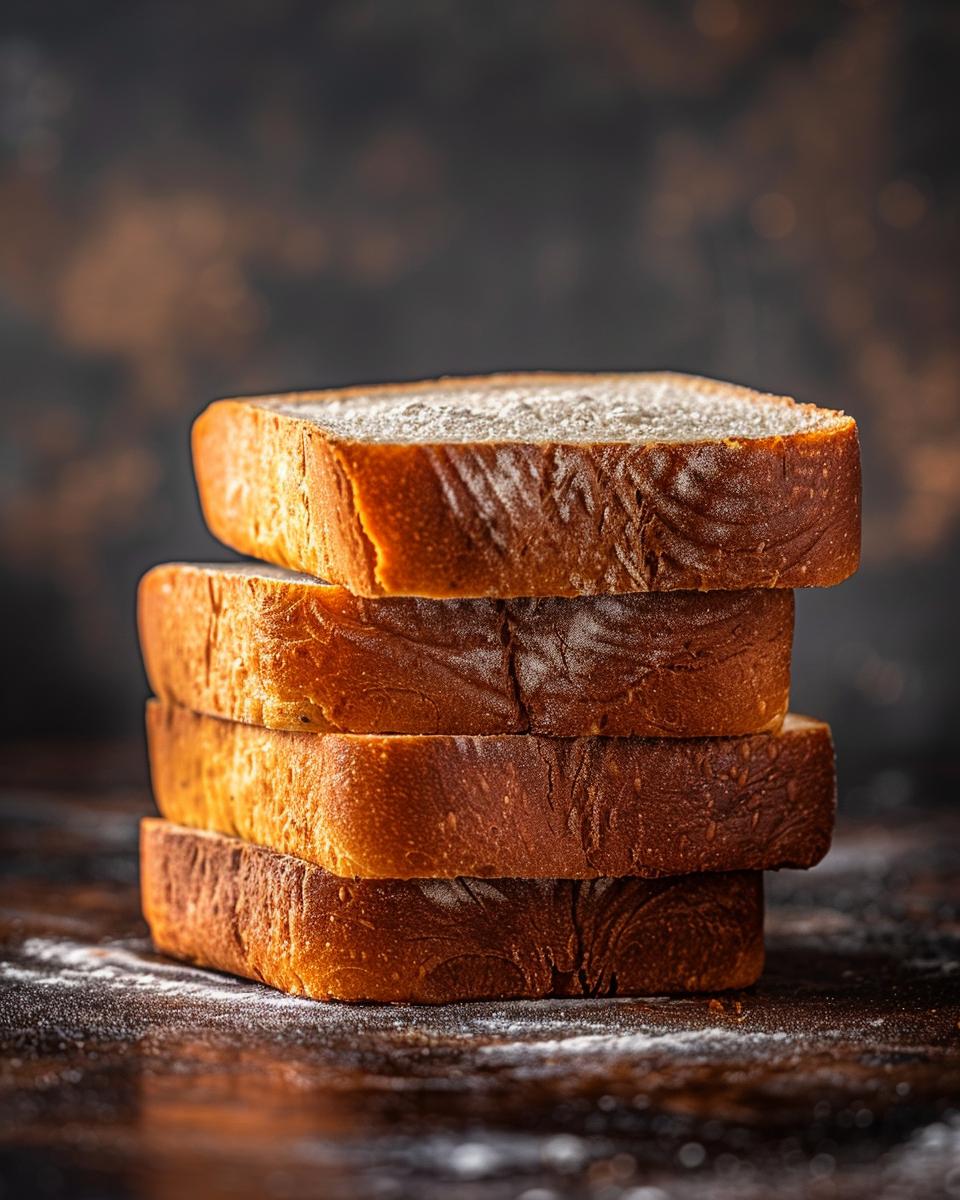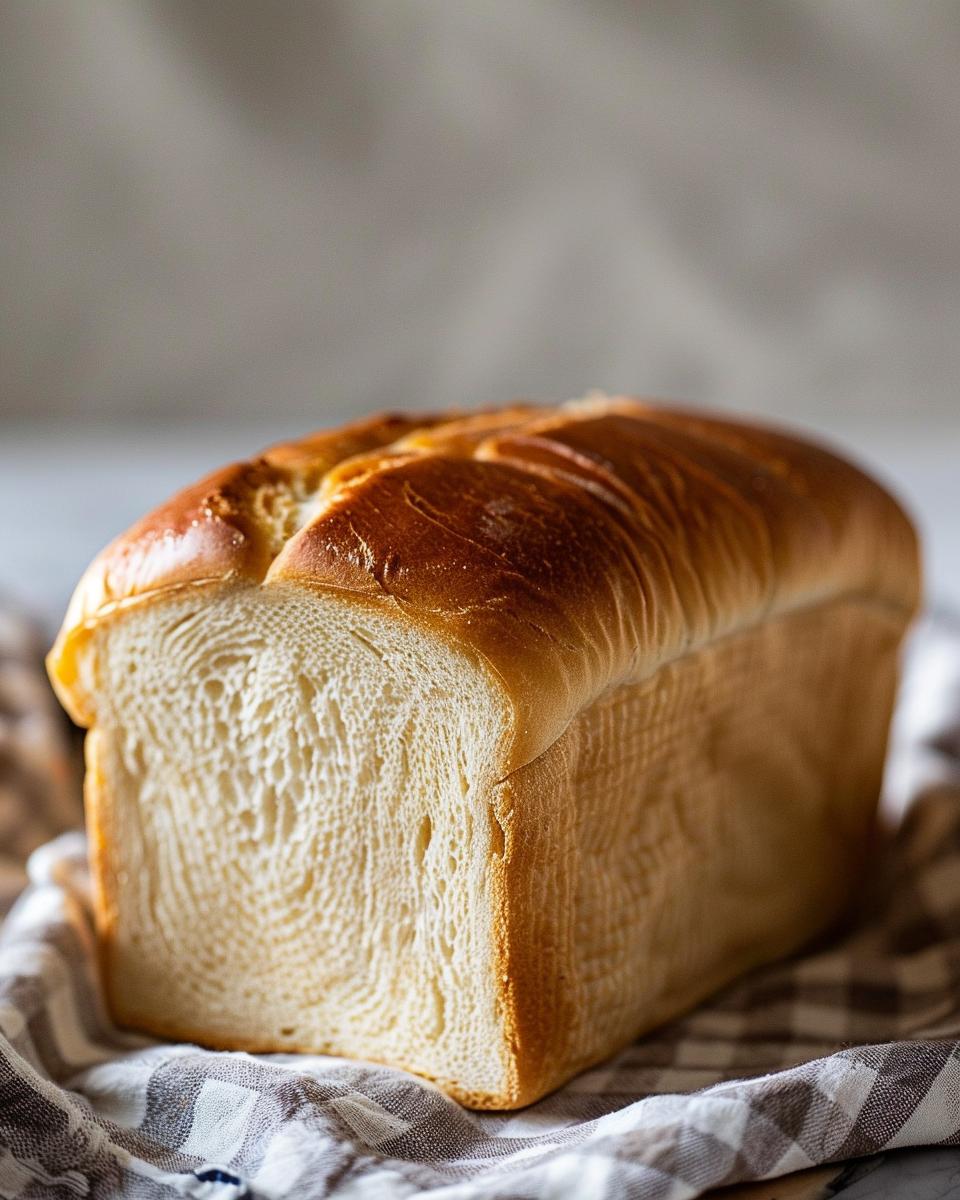Sourdough Sandwich Bread Recipe You Need to Make Today
Are you ready to elevate your sandwich game? Our sourdough sandwich bread recipe is just what you need. This easy-to-follow guide will help you create a delightful loaf, perfect for any sandwich craving. Imagine the satisfaction of biting into a homemade, wholesome bread that boasts a perfect balance of tanginess and softness. Intrigued? Let’s dive in!
In this recipe:
- Ingredients and measurements
- Step-by-step instructions
- Pro tips for the best results
- FAQs and troubleshooting
Before you start, make sure your sourdough starter is active and bubbly. If you need a guide, check out our Sourdough Starter Recipe. With a well-prepared starter, you’re on the path to creating a bread that will impress everyone at the table.
For those who love baking, why not try our Sourdough Bagel Recipe next? It’s another fantastic way to enjoy the unique flavor of sourdough.
Now, let’s get started on this amazing journey to baking the best sourdough sandwich bread!

Who Can Make This Recipe, Difficulty Level, and Essential Tools
This Classic Sourdough Bread Recipe is designed to be accessible to bakers of all skill levels. Whether you’re a beginner eager to learn or a seasoned baker looking to perfect your technique, you will find this Sourdough Sandwich Bread Recipe both enjoyable and rewarding. The difficulty level is moderate. It requires some familiarity with basic bread-making techniques but is straightforward enough for novices to follow.
Essential Tools for Success
To achieve the best results with this Sourdough Starter Sandwich Bread Recipe, you will need a few essential tools:
- Mixing Bowl: A large bowl to combine and knead your dough.
- Stand Mixer (Optional): This can help with kneading but is not essential.
- Dough Scraper: Useful for handling sticky dough and shaping.
- Dutch Oven or Baking Pot: Crucial for creating a steam-filled environment, ensuring a crispy crust.
Using quality tools can significantly impact your baking experience. For more on essential tools, check out this comprehensive guide on essential sourdough making tools.
Additionally, making Artisan Sourdough Sandwich Bread involves a few specific steps that may be new to some bakers. But don’t worry, our step-by-step instructions will guide you through the process. If you’re new to using a sourdough starter, you might find our guide on beginner sourdough starter recipe incredibly helpful.
The key to mastering this recipe is practice and patience. Don’t be discouraged if your first loaf isn’t perfect. Sourdough baking is a journey, and each loaf brings you closer to mastering the art of Sourdough Sandwich Bread.
The Ingredients Needed to Make Sourdough Sandwich Bread
Now that we’ve covered the minimal equipment needed to make your own sourdough sandwich bread, it’s time to dive into the heart of the process: the ingredients. Choosing the right ingredients is crucial for achieving that perfect, fluffy, and flavorful loaf. Let’s get started!
Essential Ingredients for Sourdough Sandwich Bread
For this sourdough sandwich bread recipe, you’ll need just a few key ingredients. Each one plays an important role in creating a delicious and well-structured bread. Here’s what you’ll need:
- 1 cup (240 ml) active sourdough starter (at 100% hydration)
- 3 cups (375g) bread flour
- 1 teaspoon salt
- 1 tablespoon water
- 1 tablespoon unsalted butter, melted (optional)
Let’s break these down a bit:
First, the active sourdough starter. This is the backbone of your sourdough bread. Make sure your starter is bubbly and active for the best rise. If you’re interested in a sourdough bread recipe with yeast, consider incorporating a bit of yeast to help with the fermentation process.
Next, the bread flour. High-protein bread flour is essential for developing strong gluten, which gives the bread its structure and chewiness. If you’re aiming for a whole wheat sourdough sandwich bread recipe, you can substitute some of the bread flour with whole wheat flour.
The salt enhances the flavor of the bread and helps control the fermentation rate. Don’t skip it!
Water is also critical. It hydrates the flour, activates the starter, and helps form gluten. And a small amount of unsalted butter can add a touch of richness to your loaf, but it’s optional if you’re aiming for a lighter bread.
Simple, right? With just a few ingredients, you’re well on your way to baking a beautiful loaf of sourdough discard sandwich bread. In the next section, we’ll dive into the step-by-step process to bring these ingredients together into a delicious loaf of sourdough sandwich bread.

Step-by-Step Guide on How to Make Sourdough Sandwich Bread
Now that you’ve gathered all the ingredients, it’s time to dive into the process of making this easy sourdough sandwich bread recipe. Follow these straightforward steps to create a delightful sourdough sandwich loaf that’s perfect for your sandwiches.
Mixing and Kneading the Dough
First, combine your active sourdough starter and 1 cup of bread flour in a large mixing bowl. Mix until you have a shaggy dough. This initial step is crucial for creating a simple sourdough sandwich bread that has the right texture.
Next, add the salt and water to the dough. Mix everything together until the dough forms a sticky ball. It’s important to incorporate all the ingredients well to ensure even fermentation.
Once mixed, knead the dough on a floured surface for about 10 minutes. You can also use a stand mixer with a dough hook attachment. The goal is to achieve a smooth and elastic dough, which is key for a fluffy sourdough sandwich loaf.
After kneading, place the dough in a lightly oiled bowl. Cover it with plastic wrap or a damp towel. This step is known as bulk fermentation. Let the dough sit at room temperature, ideally between 70°F to 75°F (21°C to 24°C), for 4 to 5 hours or until it doubles in size.
This bulk fermentation process is essential for developing the flavors and texture of your overnight sourdough sandwich bread. Be patient and avoid rushing this step.
Once the dough has doubled, gently deflate it and shape it into a rectangle. Fold the rectangle in half lengthwise, like a letter, and then fold it in half again. Place the dough onto a baking sheet or proofing basket lined with parchment paper.
Cover the dough again with plastic wrap or a damp towel. Let it proof at room temperature for 2 to 3 hours, or until it has doubled in size once more. This second rise will ensure your bread has a light and airy crumb.
Preheat your oven to 425°F (220°C) with a Dutch oven or ceramic pot inside. Once preheated, place the dough into the pot, cover with the lid, and bake for 30 minutes. Remove the lid and continue baking for an additional 15 to 20 minutes, or until the bread is golden brown and sounds hollow when tapped on the bottom.
Finally, let your bread cool on a wire rack for at least an hour before slicing. This cooling period allows the bread to set and makes slicing easier.
Enjoy your homemade simple sourdough sandwich bread! It’s perfect for sandwiches, toast, or just enjoying on its own.
Serving and Storing Ideas and Tips
Congratulations! You’ve successfully baked your first loaf of soft sourdough sandwich bread. Now, let’s dive into the specifics of serving and storing this delightful creation. Whether you’re a seasoned baker or a beginner, these tips will ensure you enjoy every bite and keep your bread fresh for days.
Serving Sourdough Sandwich Bread
Your sourdough sandwich bread is perfect for a variety of meals. Consider making a classic sourdough grilled cheese recipe that’s both crispy and gooey. The soft texture of the bread makes it ideal for kids, and you can get creative with different cheeses and toppings. Another great idea is to use it for hearty sandwiches, packed with your favorite meats and veggies. Toasting the bread will enhance its flavor and give it a satisfying crunch.
Want something simpler? Just spread some butter or jam on a slice for a quick and delicious snack. The possibilities are endless, and this bread is versatile enough to complement both sweet and savory dishes.
Storing Sourdough Bread
To keep your sourdough bread fresh, proper storage is essential. Once your bread has cooled completely, wrap it in a clean kitchen towel or place it in a bread bag. This prevents it from drying out while maintaining its crusty exterior. Store it at room temperature for up to three days. For longer storage, you can freeze the bread. Slice it first, so you can easily thaw individual pieces as needed. Just pop them in the toaster or oven to refresh.
Remember, never store your sourdough bread in the refrigerator, as it can cause the bread to become stale faster. By following these tips, you can enjoy your homemade bread at its best, whether you’re making sandwiches, a grilled cheese, or a simple buttered toast.
We hope these serving and storing ideas help you make the most of your baking efforts. Enjoy your delicious sourdough sandwich bread!

Pro Tips for Perfecting Your Sourdough Sandwich Bread Recipe
- Always use an active sourdough starter for the best rise and flavor.
- For a softer crumb, add a tablespoon of melted butter to the dough.
- To prevent sticking, lightly flour your work surface and hands.
- Use a Dutch oven to create a steam chamber for a perfect crust.
- For extra flavor, let the dough ferment in the fridge overnight.
- Always preheat your oven and Dutch oven to ensure even baking.
- Allow the bread to cool completely before slicing for best texture.
- Try different flour types for unique flavors and textures.
FAQ: Ingredient Replacement Options, Money-Saving Tips, and Relevant Tips
Substituting Ingredients
Q1: Can I substitute bread flour with all-purpose flour in sourdough sandwich bread?
A: Yes, you can use all-purpose flour instead of bread flour. However, bread flour has a higher protein content, which helps in developing a better gluten structure. Expect a slightly different texture if you use all-purpose flour, but it will still make delicious bread.
Q2: What can I use instead of milk in sourdough sandwich bread?
A: You can substitute the milk with water. If you want a richer flavor, try using a non-dairy milk like almond or oat milk. This adjustment is perfect for those looking to make sourdough sandwich bread with milk alternatives.
Q3: Can I use sourdough discard for making sandwich bread?
A: Absolutely! Using sourdough discard is a great way to avoid waste. Just remember, sourdough discard is less active than a fed starter, so your bread may take longer to rise.
Money-Saving Tips
Q4: How can I save money while making sourdough sandwich bread?
A: One of the best ways to save money is by making your own sourdough starter at home using just flour and water. This eliminates the need to buy commercial yeast and offers a more authentic flavor. For a guide on how to make a sourdough starter, check out this Beginner Sourdough Starter Recipe.
Q5: Are there any cost-effective tips for baking sourdough bread?
A: Yes! Buy flour in bulk to save money over time. Also, consider investing in reusable, high-quality baking tools that can last for years, cutting down on the need for replacements.
Relevant Tips
Q6: How can I achieve a softer crust on my sourdough sandwich bread?
A: For a softer crust, brush the bread with melted butter right after baking. This will help to soften the crust and add a rich flavor to your sourdough sandwich bread.
Q7: What makes a quick sourdough sandwich bread recipe?
A: Quick sourdough sandwich bread recipes often use a higher percentage of sourdough starter and a warm proofing environment to speed up the fermentation process. These methods can help you enjoy homemade sourdough bread faster.
Q8: What is the best sourdough sandwich bread recipe with starter?
A: The best recipes often balance the tanginess of the starter with the softness needed for sandwich bread. Following a well-reviewed recipe, like the one found on Farmhouse on Boone, can yield excellent results.












